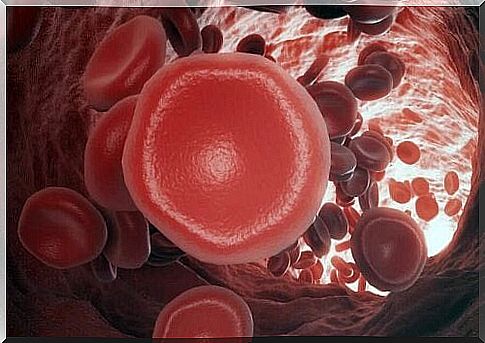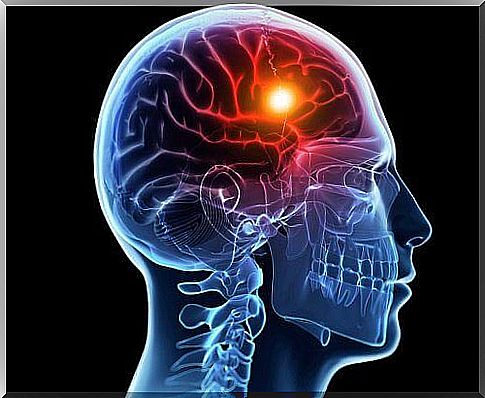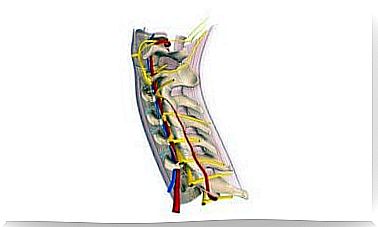Cerebral Embolism: What Is It And Where Does It Lead?

Cerebral embolism is a type of stroke in which part of the brain stops receiving blood. Unfortunately, it is a very common pathology and emergency that requires immediate first aid. In this article, we will explain in more detail what kind of cerebral embolism is, what causes it, how it affects the body, and how it is treated.
What is cerebral embolism?
As we already mentioned, cerebral embolism is a type of cerebral infarction. In practice, this means that due to the interruption of the blood flowing in the blood vessels of the brain, the area of the brain where the damaged blood vessel is located no longer receives blood.
When the tissue stops receiving blood, it also does not receive oxygen or other nutrients because the blood is responsible for transporting these substances. In this case, those cells that are part of this tissue first have difficulty continuing to perform their function, at which point they eventually die.
Different types of cerebral infarctions are based on the mechanism that leads to the seizure. Therefore, cerebral embolism occurs – as the name implies – due to a blood clot, or embolus, that travels from another part of the body to the blood vessels in the brain.
This blood clot can be made up of different substances such as a cell clot and blood particles. The blood clot passes through the blood vessels until it reaches a vessel where it is stuck due to its size and clogs the vessel, thus preventing normal blood flow.

Causes and types of cerebral embolism
The blood clots that can lead to cerebral embolism are thus different in composition. Some of the main types of blood clots and their causes are:
- Blood clots. Blood clots, as the name implies, are formed by a blood clot that is denser in structure than normal blood. The main cause of blood clots is atrial fibrillation, which causes wavy blood to flow to the heart, where blood clots begin to form. Long immobility, especially after leg surgery or a serious accident, also facilitates the formation of these clots.
- Air. It is an air bubble that prevents the normal transport of blood. Air bubbles form when air manages to enter directly into a blood vessel. This can happen, for example, when a needle is inserted into a vein, for example for blood tests.
- Fat. Blood clots due to fat accumulation occur when too much fat accumulates in the blood in the form of cholesterol.
For the sake of clarity, the difference between thrombosis and an embolus is that thrombosis closes a blood vessel at the same site where it is formed, without, however, detaching from the walls of the blood vessel. The embolus, on the other hand, travels through the bloodstream through the body until it gets stuck in place. However, the causes and types of thrombosis and embolus are the same in the areas where they affect.
How does cerebral embolism affect the body and what are its symptoms?
The brain is the body’s most sensitive organ to blood flow. This is because the brain is made up of many nerve cells, or neurons, that constantly require large amounts of oxygen. Interruption of blood flow in any of these areas causes atrophy of brain tissue and tissue death within minutes.
Symptoms of cerebral embolism appear suddenly. There are also cases where they gradually appear within hours, but these cases occur very little.
The symptoms depend both on the blood vessel that has been affected by the blood clot and on the area of the brain and the extension to which that blood vessel carries blood. Some of the most common symptoms of cerebral embolism are:
- Headache
- Weakness or loss of sensation in one or more limbs or the other side of the body
- Sudden difficulty producing speech or understanding speech
- There are motor difficulties when walking
- Dizziness or fainting
- Loss of vision in one or both eyes
Diagnosis and treatment of cerebral embolism

Cerebral embolism is always an emergency that requires immediate treatment. This is because the longer an area of the brain is left without blood circulation, the more tissue dies, making the consequences more serious and irreversible. Rapid identification of symptoms and calling the emergency center are crucial in this situation.
Once the ambulance is on site, emergency medical personnel are responsible for the clinical evaluation of the patient. At the hospital, the patient undergoes tests, such as a computed tomography scan, or CT scan, to both confirm that there is a stroke and to determine which type of stroke belongs.
Once the type of cerebral ischemia is confirmed, treatment is started immediately. In the case of cerebral embolism, the seizure can be treated with drugs that dissolve the blood clot. In some cases, the patient may also undergo surgery to remove the plug. The method of treatment always depends on the type and location of the blood clot causing the cerebral embolism, and experts will decide on the treatment that is best suited to each case.
Cerebral embolism is an emergency
Cerebral embolism is a common pathology that always requires immediate treatment. It is essential to be able to identify the symptoms and warning signs of a seizure so that an emergency can be reported to the emergency service as soon as possible. In this way, first-aid staff are available as soon as possible, after which they make a decision on the patient’s first aid, depending on the severity of the situation.
We must also keep in mind that not all functions lost after a stroke can always be restored. This is a serious seizure that requires rehabilitation of the patient. The recovery period after cerebral embolism can even be a very long and demanding process, depending on the case.









